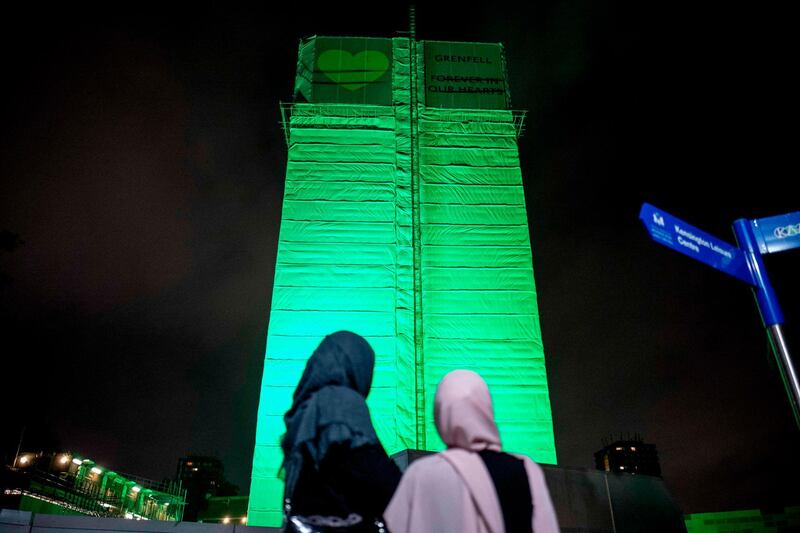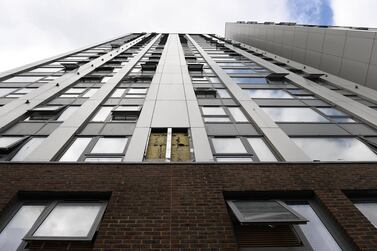The British government set up a £200 million (Dh955m) fund to pay for the replacement of unsafe Grenfell Tower-style cladding on about 170 high-rise buildings in England.
The June 2017 fire in West London killed 72 people and injured more than 70 others.
After the disaster, the UK government identified 176 private high-rise buildings with unsafe cladding. According to the most recent government data, 10 of these have had their cladding replaced.
Prime Minister Theresa May said her government had asked building owners in the private sector "to take action and make sure appropriate safety measures were in place".
“And we’ve seen a number of private building owners doing the right thing and taking responsibility, but unfortunately too many are continuing to pass on the costs of removal and replacement to leaseholders.”
James Brokenshire, Britain's housing minister, said that the government appreciated the work of campaigners Grenfell United and UK Cladding Action Group, who highlighted the challenges in getting private owners to pay for replacement cladding.
He added that freeholders need to work harder to equip residential blocks with adequate cladding.
“Although temporary measures are in place to ensure people living in these buildings are safe, too many owners are treating this as a permanent fix. Others are trying to pass on the costs to residents by threatening them with bills running to thousands of pounds,” he said.
Government figures show that work to remove and replace cladding on 166 privately owned buildings has yet to start, compared to 23 buildings in the social sector.
Building owners will have three months to use the new fund and they will be able to register for the scheme by early July. The government said it would “look carefully” at owners that fail to replace the cladding and will consider further action.
The funds will be available for private high-rise residential buildings, after the government fully funded the replacement of unsafe ACM cladding on social sector properties.
British building owners and developers who have already fully funded the remediation of buildings include Pemberstone, Aberdeen Asset Management, Barratt Developments, Fraser Properties, Legal & General, Mace and Peabody.
Since the Grenfell Tower Inquiry, the government established a building safety programme that included an independent review of fire safety and building regulations. Plans outlined on December 18 last year explain how the government will carry out the recommendations made by Dame Judith Hackitt in her review of building regulations and fire safety.
In December, Roy Weghorst, head of regulatory affairs at Kingspan, an international building materials supplier, warned at an Abu Dhabi event that skyscraper cities must better scrutinise the quality of buildings under construction to avoid devastating fires like Grenfell.
A high-profile blaze in Dubai in 2012 was blamed on combustible, externally fitted cladding, often used for cosmetic purposes.







